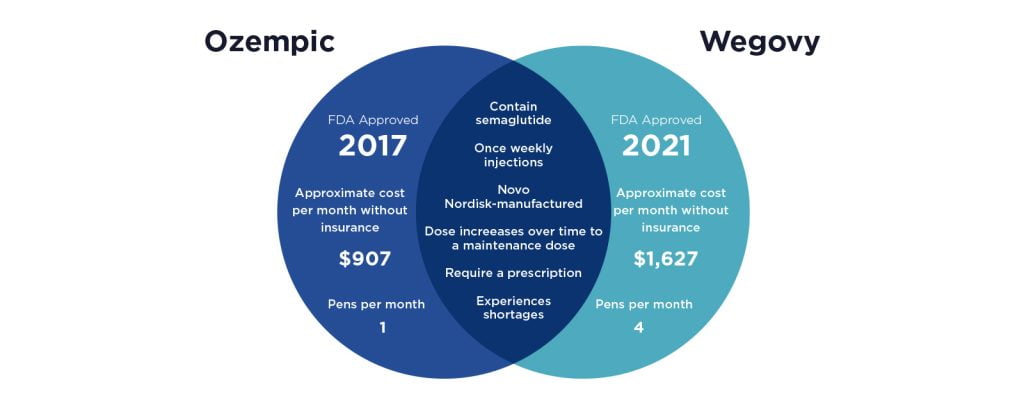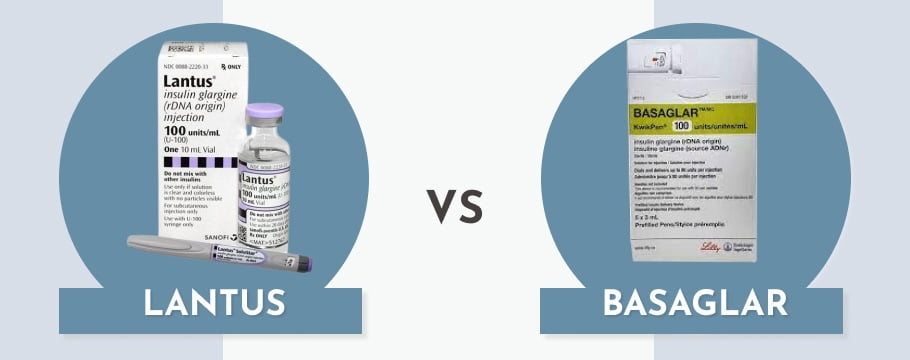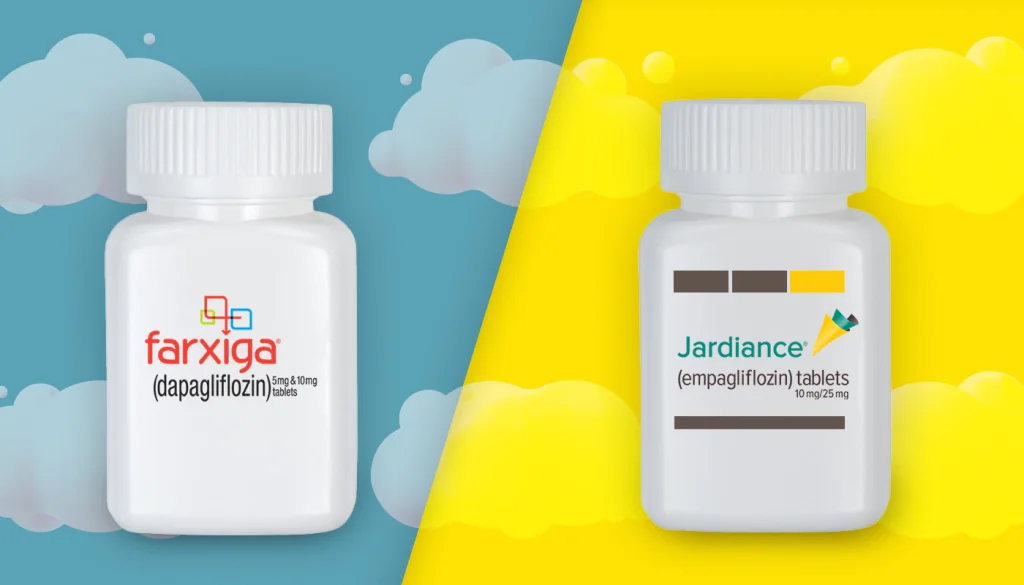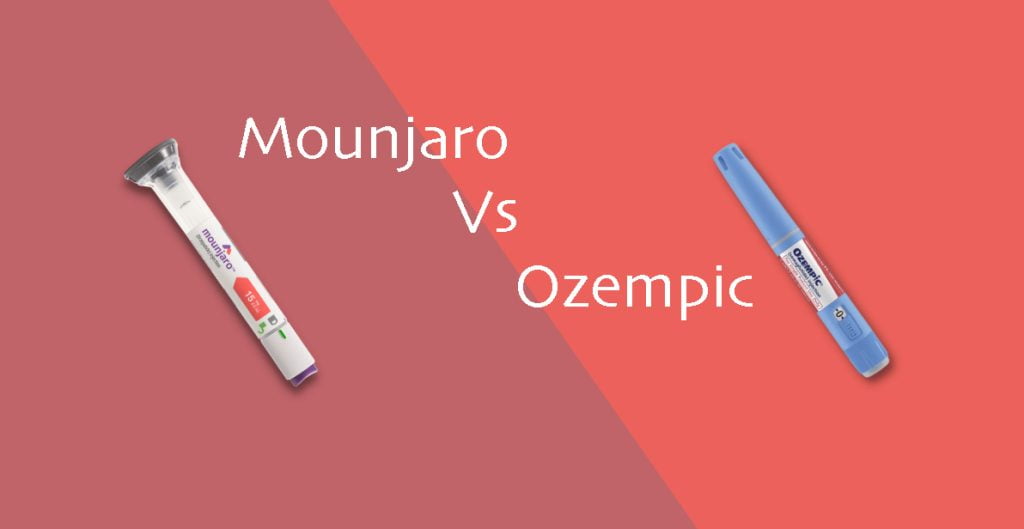Switching from Ozempic to Mounjaro: What You Need to Know

Switching diabetes medications can be a complex process, particularly when moving from Ozempic (semaglutide) to Mounjaro (tirzepatide). Both medications are designed to manage blood sugar levels in type 2 diabetes, but they have distinct mechanisms of action and side effect profiles. This article aims to provide comprehensive guidance for those considering or undergoing this transition. Understanding the Medications Ozempic (semaglutide) is a GLP-1 receptor agonist that helps to control blood sugar by enhancing insulin secretion, slowing gastric emptying, and reducing appetite. Mounjaro (tirzepatide), on the other hand, is a dual GIP and GLP-1 receptor agonist. This dual action can provide more substantial improvements in glycemic control and weight loss, but it also means the medication’s side effects and dosing considerations may differ. Why Switch from Ozempic to Mounjaro? Patients and healthcare providers may consider switching from Ozempic to Mounjaro for several reasons: Comparing Side Effects: Ozempic vs. Mounjaro When evaluating ozempic vs. mounjaro side effects, it’s essential to note the following: Dosage Conversion and Transition Switching from semaglutide to tirzepatide dosage requires careful planning. Healthcare providers will typically use a dosage ozempic to mounjaro conversion chart to determine the appropriate starting dose of Mounjaro, often beginning with the lowest dose and titrating up based on patient response and tolerability. Example Dosage Conversion: Starting Mounjaro Can you start Mounjaro at 5mg? Yes, starting at 5 mg is common for new patients or those switching from another medication, allowing for gradual adjustment to the drug’s effects. Conversion Charts Utilizing ozempic to mounjaro conversion charts and trulicity to mounjaro conversion charts helps healthcare providers make informed decisions about transitioning between medications. These charts consider factors such as current dosages, patient weight, and individual response to medication. Clinical Considerations When switching medications, it’s crucial to monitor: Can You Take Ozempic and Mounjaro Together? Can you take Ozempic and Mounjaro together? Generally, this is not recommended as both medications work on similar pathways, and combining them could increase the risk of side effects without providing additional benefits. Key Takeaways Switching diabetes medications is a significant decision that should be made in consultation with a healthcare provider. With the right approach, patients can achieve optimal diabetes management and improved overall health outcomes. Additional Resources For more detailed insights and updates on diabetes medications and management, visit InsulinReview’s comprehensive reviews and expert articles.
Ozempic vs Wegovy: The Price Comparison That Will Blow Your Mind!

At InsulinReview, we strive to provide insightful comparisons to help you make informed decisions about your diabetes management. In this article, we’ll delve into a head-to-head comparison of Ozempic vs Wegovy, two popular medications for weight loss and diabetes management. Buckle up as we explore the cost, efficacy, and more! Wegovy vs Ozempic Both Wegovy (semaglutide) and Ozempic (semaglutide) belong to the same class of medications known as glucagon-like peptide-1 receptor agonists (GLP-1 RAs). They work by mimicking the action of the hormone GLP-1, which helps regulate blood sugar levels and promotes weight loss. Cost Comparison When it comes to Wegovy vs Ozempic cost, the difference can be significant. While both medications are effective for weight loss and diabetes management, the cost can vary depending on factors such as insurance coverage, dosage, and pharmacy discounts. Efficacy for Weight Loss Clinical trials have shown both Wegovy and Ozempic to be highly effective for weight loss. In head-to-head studies, Wegovy has demonstrated superior weight loss outcomes compared to Ozempic. However, individual responses may vary, and your healthcare provider can help determine which medication is best for you based on your medical history and treatment goals. Mounjaro vs Ozempic vs Wegovy Mounjaro is not a medication but rather a hypothetical comparison term. However, if we consider Mounjaro vs Ozempic vs Wegovy, it’s important to consult with your healthcare provider about the available options and their suitability for your specific needs. Wegovy in Canada For Canadian residents, accessing Wegovy may involve considerations such as Wegovy Canada pharmacy availability and potential coverage under provincial healthcare plans. Be sure to discuss with your healthcare provider and pharmacist about the options available to you. Conclusion While both Wegovy and Ozempic offer promising benefits for weight loss and diabetes management, the decision between the two ultimately comes down to factors such as cost, efficacy, and individual preferences. Consulting with your healthcare provider is key to determining the most suitable medication for your needs. Stay tuned to InsulinReview for more insightful comparisons and expert advice on diabetes medications. Stay Informed, Stay Healthy! At InsulinReview, we’re committed to empowering you with knowledge to manage your health better. For more expert insights and reviews on diabetes medications, visit us regularly. Your health journey starts here!
Diabetes and Autoimmune Diseases: Understanding the Link

At InsulinReview, we aim to provide comprehensive insights into various aspects of diabetes management. One critical area of focus is the relationship between diabetes and autoimmune diseases. Autoimmune diseases occur when the body’s immune system mistakenly attacks its own tissues, and diabetes can be closely linked to these conditions. This article explores how autoimmune processes affect diabetes and vice versa. Is Diabetes an Autoimmune Disease? Is diabetes an autoimmune disease? The answer depends on the type of diabetes. Type 1 diabetes is indeed an autoimmune disease. In type 1 diabetes, the immune system attacks and destroys the insulin-producing beta cells in the pancreas. This leads to a complete lack of insulin, requiring individuals to manage their condition with insulin therapy. Is Type 2 Diabetes an Autoimmune Disease? Is type 2 diabetes an autoimmune disease? No, type 2 diabetes is not primarily an autoimmune disease. While type 2 diabetes involves insulin resistance and relative insulin deficiency, it is mainly associated with lifestyle factors and genetic predisposition. However, some recent studies suggest that there may be an autoimmune component in a subset of type 2 diabetes cases, but this is not yet well understood or broadly accepted. Autoimmunity and Diabetes Autoimmunity diabete refers to the autoimmune processes involved in the development of diabetes, particularly type 1 diabetes. The immune system’s attack on pancreatic beta cells is the hallmark of this condition. Understanding the mechanisms of autoimmunity in diabetes is crucial for developing targeted therapies to prevent or halt the disease’s progression. Autoimmune Disease That Mimics Diabetes An autoimmune disease that mimics diabetes is Latent Autoimmune Diabetes in Adults (LADA). LADA shares characteristics with both type 1 and type 2 diabetes. It is often misdiagnosed as type 2 diabetes because it occurs in adults and progresses more slowly than typical type 1 diabetes. However, LADA involves autoimmune destruction of beta cells, similar to type 1 diabetes, and ultimately requires insulin therapy. Is Diabetes a Autoimmune Disease? Is diabetes a autoimmune disease? As previously mentioned, type 1 diabetes is an autoimmune disease, while type 2 diabetes is not generally classified as one. However, understanding the autoimmune aspects of type 1 diabetes is essential for managing and potentially preventing this condition. Autoimmune Diseases That Cause Hypoglycemia There are autoimmune diseases that cause hypoglycemia. One example is autoimmune hypoglycemia, where the body’s immune system produces antibodies against insulin or insulin receptors, causing unregulated insulin release and resulting in low blood sugar levels. Managing such conditions requires careful monitoring and specialized treatment. Diabetes Immune System Diabetes immune system dysfunction is at the core of type 1 diabetes. The immune system’s attack on pancreatic beta cells leads to the need for lifelong insulin therapy. Understanding and modulating the immune response in diabetes is a key area of research aimed at finding ways to prevent or cure the disease. Key Takeaways Conclusion Understanding the relationship between diabetes and autoimmune diseases is essential for comprehensive diabetes care. At InsulinReview, we are committed to providing the latest insights and reviews to help manage and potentially prevent these conditions. Whether you are dealing with type 1 diabetes or a related autoimmune condition, staying informed about the latest research and treatment options is crucial for optimal health outcomes. For more detailed reviews and expert perspectives on diabetes and autoimmune diseases, visit InsulinReview, your trusted source for comprehensive medical information.
Navigating Wegovy vs Ozempic: A Comprehensive Comparison

In our comprehensive blog post, “Wegovy vs Ozempic,” we delve into the experiences and insights of users regarding these medications, focusing on their uses, side effects, dosage, and alternatives. Our aim is to provide accessible information that caters to readers of all backgrounds, ensuring that even those unfamiliar with medical terminology can understand the nuances of these treatments, particularly in managing conditions such as diabetes. Uses and Effectiveness Wegovy and Ozempic are both medications used to manage diabetes, with a specific focus on weight loss as well. These medications belong to the class of glucagon-like peptide-1 (GLP-1) receptor agonists, which work by stimulating insulin production and reducing appetite. Readers will gain an understanding of why healthcare professionals prescribe these medications and their effectiveness in managing blood sugar levels and promoting weight loss in individuals with diabetes. Mechanism of Action Both Wegovy and Ozempic work by mimicking the action of a naturally occurring hormone called glucagon-like peptide-1 (GLP-1), which helps regulate blood sugar levels and appetite. By targeting GLP-1 receptors in the body, these medications can improve insulin sensitivity, decrease appetite, and promote weight loss. Understanding their mechanism of action provides insight into how they can benefit individuals with diabetes and obesity. Side Effects and Considerations While Wegovy and Ozempic offer potential benefits in managing diabetes and promoting weight loss, it’s essential to consider potential side effects and considerations. Readers will find insights into common side effects such as nausea, vomiting, and diarrhea, as well as more severe reactions that may require medical attention. Understanding the potential drawbacks and considerations associated with these medications allows individuals to make informed decisions about their treatment plan. Dosage and Administration The dosage and administration of Wegovy and Ozempic may vary depending on individual factors such as weight, medical history, and response to treatment. Readers will learn about the recommended dosage regimens for each medication and how they are administered, whether through injection pens or other delivery methods. Adhering to the prescribed dosage and administration guidelines is essential for optimizing treatment outcomes. Alternatives and Considerations While Wegovy and Ozempic are effective options for managing diabetes and promoting weight loss, individuals may also consider alternative treatments or complementary therapies. Exploring alternative medications or lifestyle modifications can complement these medications and enhance overall diabetes management strategies. Additionally, discussing with healthcare providers allows individuals to tailor their treatment plan to their specific needs and preferences. In conclusion, our comprehensive comparison of Wegovy vs Ozempic provides valuable insights into these medications’ uses, side effects, dosage, and alternatives. By presenting accessible information, we aim to empower readers to make informed decisions about their diabetes management and overall health journey.
Exploring Humalog vs Novolog: A Comprehensive Comparison

In the comprehensive blog post “Humalog vs Novolog,” we delve into the experiences and insights of users regarding these medications, focusing on their uses, side effects, dosage, and alternatives. By providing accessible information, we aim to empower readers, including those unfamiliar with diabetes management, to make informed decisions about their healthcare. Humalog vs Novolog – Similarities Both Humalog and Novolog are rapid-acting insulin analogs used to manage blood sugar levels in individuals with diabetes. They work similarly by helping the body process glucose more effectively, particularly after meals, to prevent spikes in blood sugar. Humalog vs Novolog – The Main Difference While Humalog and Novolog are similar in their mechanism of action, they differ slightly in their onset, peak, and duration of action. Understanding these differences can help individuals and healthcare providers tailor treatment plans to meet specific needs and lifestyle factors. Humalog vs Novolog – Common Side Effects Like any medication, Humalog and Novolog may cause side effects. These can include injection site reactions, hypoglycemia (low blood sugar), weight gain, and allergic reactions. It’s essential for users to be aware of these potential side effects and discuss any concerns with their healthcare provider. Humalog vs Novolog – Cost The cost of Humalog and Novolog may vary depending on factors such as insurance coverage, pharmacy discounts, and geographic location. Individuals may explore options such as online pharmacies or patient assistance programs to help reduce out-of-pocket expenses. Humalog vs Novolog – Who Should Take Them? Humalog and Novolog are suitable for individuals with type 1 diabetes, as well as some individuals with type 2 diabetes who require insulin therapy to manage their condition effectively. Healthcare providers will assess factors such as blood sugar levels, medical history, and lifestyle when determining the most appropriate treatment regimen. Bottom Line In conclusion, both Humalog and Novolog are effective medications for managing blood sugar levels in individuals with diabetes. While they share similarities, they also have differences that may influence treatment decisions. By understanding their uses, side effects, and considerations, individuals can work with their healthcare providers to develop personalized diabetes management plans that promote optimal health and well-being.
Basaglar vs Lantus: Comparing Insulin Options for Diabetes Management

In our comprehensive blog post “Basaglar vs Lantus,” we aim to provide valuable insights into these insulin medications, drawing from user experiences to cover their uses, side effects, dosage, and alternatives. Our goal is to offer accessible information that caters to readers of all backgrounds, ensuring that even those unfamiliar with medical terminology or the specifics of diabetes management can gain valuable insights into these treatment options. Uses Basaglar and Lantus are both long-acting insulin medications commonly prescribed to manage blood sugar levels in individuals with diabetes. They belong to the class of insulins known as basal or background insulins, which provide a steady release of insulin throughout the day, helping to control glucose levels between meals and overnight. These medications are often prescribed to individuals with type 1 or type 2 diabetes who require insulin therapy to maintain optimal blood sugar control. Mechanism of Action Both Basaglar and Lantus contain insulin glargine, a synthetic form of insulin that mimics the body’s natural insulin production. They work by lowering blood sugar levels by promoting the uptake of glucose into cells for energy production. Their long-acting nature allows for once-daily administration, providing consistent coverage over a 24-hour period. Side Effects As with any medication, Basaglar and Lantus may cause side effects in some individuals. Common side effects may include injection site reactions, such as redness, swelling, or itching, as well as low blood sugar (hypoglycemia) and weight gain. It’s essential for users to monitor for these side effects and consult their healthcare provider if they experience any adverse reactions. Dosage The appropriate dosage of Basaglar or Lantus varies depending on factors such as the individual’s insulin requirements, diet, physical activity level, and overall health status. Healthcare providers typically start with a conservative dose and adjust it based on the patient’s response and blood sugar levels. It’s crucial for individuals to follow their healthcare provider’s instructions regarding insulin dosage and administration. Alternatives While Basaglar and Lantus are popular choices for long-acting insulin therapy, there are alternative options available, including other long-acting insulin formulations and insulin delivery devices. Users may explore alternatives based on factors such as cost, convenience, and personal preferences, in consultation with their healthcare provider. In conclusion, Basaglar and Lantus are effective long-acting insulin medications used in the management of diabetes. By providing comprehensive information on their uses, side effects, dosage, and alternatives, we aim to empower readers to make informed decisions about their diabetes treatment plan. It’s essential for individuals to work closely with their healthcare provider to determine the most suitable insulin regimen for their individual needs and lifestyle.
Navigating Farxiga vs Jardiance: A Comprehensive Comparison

Choosing between Farxiga and Jardiance for managing diabetes involves weighing various factors such as effectiveness, side effects, cost, and dosage. In this comprehensive review, we delve into the similarities and differences between these medications to help you make an informed decision. Understanding Farxiga and Jardiance Both Farxiga and Jardiance belong to a class of medications known as SGLT2 inhibitors, which work by helping the kidneys remove glucose from the bloodstream through urine. They are commonly prescribed to lower blood sugar levels in adults with type 2 diabetes. Active Ingredient Manufacturer Dosage Cost without Insurance Primary Function Secondary Function(s) Pros Cons Farxiga Dapagliflozin AstraZeneca 5 mg, 10 mg $500-$600/month Lower blood sugar levels by promoting glucose excretion in urine It may improve heart and kidney health Effective in controlling blood sugar levels, May benefit heart and kidney health May cause urinary tract infections, Genital yeast infections, Dehydration Jardiance Empagliflozin Boehringer Ingelheim, Eli Lilly and Company 10 mg, 25 mg $500-$600/month Lower blood sugar levels by promoting glucose excretion in urine May improve heart health, May reduce the risk of cardiovascular events Effective in controlling blood sugar levels, May benefit heart health May cause urinary tract infections, Genital yeast infections, Dehydration FARXIGA and JARDIANCE Jardiance vs Farxiga: Side Effect Comparison Both Farxiga (dapagliflozin) and Jardiance (empagliflozin) belong to the class of medications known as sodium-glucose cotransporter 2 (SGLT2) inhibitors, used primarily for the management of type 2 diabetes mellitus. While these medications are effective in lowering blood sugar levels, they can also cause side effects in some individuals. Here are some common side effects associated with Farxiga and Jardiance: Common Side Effects Severe Side Effects Farxiga and Jardiance Both Farxiga and Jardiance, being similar medications used for managing type 2 diabetes, share severe side effects. These include the risk of diabetic ketoacidosis (DKA), serious urinary tract infections (UTIs) leading to conditions like urosepsis and pyelonephritis, hypovolemia resulting from fluid loss, and the potential for hypoglycemia or low blood sugar. These adverse effects underscore the importance of close monitoring and prompt medical attention when using these medications, particularly in patients with pre-existing conditions or who are at higher risk for these complications. Cost Considerations The cost Farxiga and Jardiance can vary, with Farxiga typically being slightly more expensive. On average, Farxiga may cost around $500 to $600 per month, while Jardiance may cost slightly less. However, actual costs may differ based on factors such as insurance coverage and pharmacy discounts. How to Take Jardiance vs Farxiga Farxiga and Jardiance are typically taken once daily, with or without food. The recommended dosage may vary based on individual factors such as kidney function and other medications being taken. Your healthcare provider will determine the appropriate dosage for you. This table provides a comparison of the dosage requirements for Jardiance and Farxiga in their shared uses, including type 2 diabetes management. Medication Type 2 Diabetes Heart Failure Chronic Kidney Disease Jardiance 10 mg once daily 10 mg once daily 10 mg once daily Farxiga 5 mg or 10 mg once daily Not indicated Not indicated Can You Switch Between Jardiance and Farxiga Yes, it is possible to switch between Jardiance and Farxiga under the guidance of a healthcare provider. However, it’s crucial to consult with your healthcare provider before making any changes to your medication regimen. Your healthcare provider can assess your individual medical history, current health status, and treatment goals to determine if switching medications is appropriate for you. They can also provide guidance on the proper transition process and any potential risks or benefits associated with switching between these medications. Always follow your healthcare provider’s recommendations and closely monitor your response to the new medication to ensure optimal therapeutic outcomes. Which Is Better Farxiga or Jardiance? Both medications, belonging to the SGLT2 inhibitor class, effectively manage type 2 diabetes by reducing blood sugar levels and mitigating cardiovascular risks. However, variations exist in dosage, administration, and side effects, influencing the choice. Clinical efficacy and safety profiles are comparable between Farxiga and Jardiance, with no definitive evidence suggesting superiority of one over the other. Summary Choosing between Farxiga and Jardiance involves considering factors such as effectiveness, side effects, cost, and dosage. Both medications have been shown to be effective in lowering blood sugar levels and reducing the risk of cardiovascular events in people with type 2 diabetes. By working closely with your healthcare provider and discussing your specific needs and preferences, you can determine which medication is the best fit for you.
Comparing Wegovy and Mounjaro for Diabetes Control

Managing health conditions can be complex, especially when it involves medications that might seem unfamiliar or overwhelming. Wegovy and Mounjaro are two such medications that aid in weight management and diabetes control. Let’s take a closer look at what they are and how they are used. Understanding the Purpose Both Wegovy and Mounjaro are prescribed to assist individuals in their weight loss journey. Wegovy, approved by the FDA for long-term weight management, is recommended for people dealing with obesity or those who are overweight with specific weight-related conditions like high blood pressure. On the other hand, Mounjaro, although not directly approved for weight management, is sometimes prescribed off-label for this purpose. Its primary FDA approval is for managing blood sugar levels in adults diagnosed with type 2 diabetes. Generic Versions and Use in Children As of now, neither Wegovy nor Mounjaro has a generic version available. Wegovy is FDA-approved for weight loss in certain children aged 12 years and older, while Mounjaro isn’t authorized for use in children. Dosage and Administration Both medications are administered via injections under the skin, typically in the abdomen, upper thigh, or upper arm. Doctors provide guidance on the injection process and frequency. While Wegovy is specifically designed for weight management, Mounjaro’s use for weight loss is considered off-label. Potential Side Effects Both Wegovy and Mounjaro might lead to a range of side effects, varying from mild to severe. Some common mild side effects include digestive issues like diarrhea, nausea, constipation, or indigestion. Dizziness, fatigue, headache, and injection site reactions such as swelling and itching are also possible. It’s important to note that these lists are not exhaustive, and there might be additional side effects associated with each medication. Conclusion Wegovy and Mounjaro serve different primary purposes – weight management and diabetes control, respectively. While Wegovy is specifically aimed at weight loss, Mounjaro’s focus is primarily on managing blood sugar levels in individuals with type 2 diabetes. Understanding the differences in their intended use, potential side effects, and administration can help individuals make informed decisions in consultation with their healthcare providers. Remember, it’s crucial to consult a healthcare professional before starting any medication, as they can provide personalized guidance based on individual health needs and conditions.
Comparing Mounjaro and Ozempic for Diabetes and Weight Management

Managing Type 2 diabetes involves various considerations, including medications like Ozempic and Mounjaro. These FDA-approved drugs play a pivotal role in diabetes management and weight control. To simplify the comparison for those unfamiliar with diabetes, let’s break down the information into clearer sections. Understanding Ozempic and Mounjaro Ozempic and Mounjaro are weekly injections specifically designed for individuals dealing with Type 2 diabetes. These medications aim to regulate blood sugar levels and aid in weight management. Drug Blood Sugar Reduction Body Weight Reduction Tirzepatide 2% High/Medium Doses Semaglutide 1.86% Medium/Low Doses Key Differences between Ozempic and Mounjaro Usage and Considerations Effectiveness Comparison Resources and References: Frequently Asked Questions (FAQs): Can I take Ozempic and Mounjaro together? Healthcare providers advise against combining these medications due to potential side effects. Transitioning between them might be possible but requires professional guidance and dose adjustments. Which drug is more effective for weight loss? Mounjaro has shown more promising weight loss outcomes in clinical trials, but Ozempic is also known to contribute to weight loss, albeit prescribed off-label for this purpose. Are there any cardiovascular benefits associated with these medications? Ozempic holds FDA approval for reducing the risk of major cardiovascular events in individuals with Type 2 diabetes and established cardiovascular disease. Where can I find more information? Detailed prescribing information and study findings can be obtained from the respective drug manufacturers’ websites and clinical trial publications. Always consult a healthcare provider before starting or changing any medications. They can provide personalized guidance based on individual health needs and concerns.
